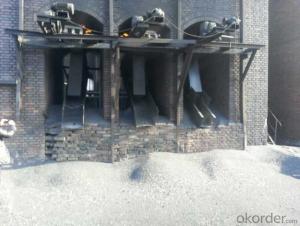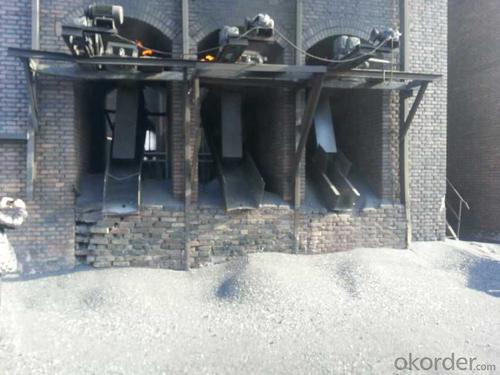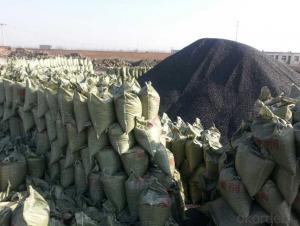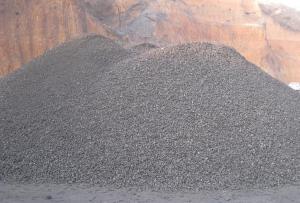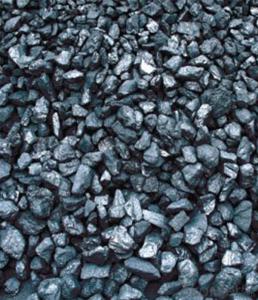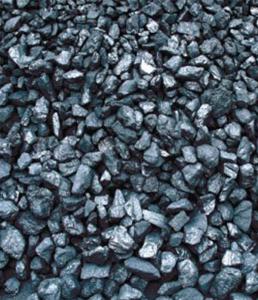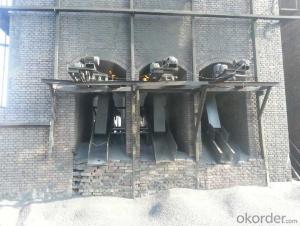Calcined Anthracite FC82-90 Made From Taixi Anthracite
- Loading Port:
- Lianyungang
- Payment Terms:
- TT OR LC
- Min Order Qty:
- 20 m.t.
- Supply Capability:
- 3500 m.t./month
OKorder Service Pledge
OKorder Financial Service
You Might Also Like
Calcined Anthracite FC82-90
Packaging & Delivery
25kgs/50kgs/1ton per bag or as buyer's request
Features
Calcined Anthracite
Fixed carbon: 90%-95%
S: 0.5% max
Size: 0-3. 3-5.3-15 or as request
It used the high quality anthracite as raw materials through high temperature calcined at over 2000 by the DC electric calciner with results in eliminating the moisture and volatile matter from anthracite efficiently, improving the density and the electric conductivity and strengthening the mechanical strength and anti-oxidation. It has good characteristics with low ash, low resistvity, low sulphur, high carbon and high density. It is the best material for high quality carbon products.
Advantage and competitive of caclined anthracite
1. strong supply capability
2. fast transportation
3. lower and reasonable price for your reference
4.low sulphur, low ash
5.fixed carbon:95% -90%
6..sulphur:lower than 0.3%
General Specification of Calcined Anthracite
| FC | 95 | 94 | 93 | 92 | 90 |
| ASH | 4 | 5 | 6 | 6.5 | 8.5 |
| V.M. | 1 | 1 | 1 | 1.5 | 1.5 |
| S | 0.3 | 0.3 | 0.3 | 0.35 | 0.35 |
| MOISTURE | 0.5 | 0.5 | 0.5 | 0.5 | 0.5 |
Pictures
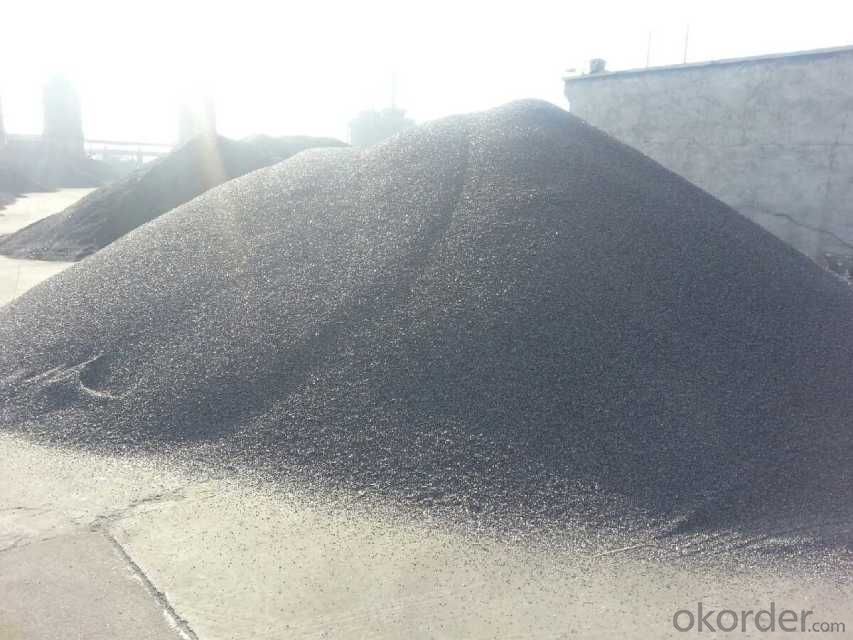
- Q: How does carbon affect the formation of droughts?
- Carbon does not directly affect the formation of droughts. However, increased carbon dioxide levels resulting from human activities contribute to climate change, which can lead to changes in precipitation patterns and increased likelihood of drought conditions in certain regions.
- Q: What is the role of carbon in the formation of diamonds?
- The creation of diamonds heavily relies on carbon, as it is the sole element accountable for their existence. Diamonds are generated in the deep recesses of the Earth's mantle, amidst extreme temperature and pressure. When carbon atoms face immense heat and pressure, they undergo a process called graphitization, which entails rearranging their atomic composition and transitioning into a crystal lattice structure, ultimately leading to the formation of diamonds. The process commences with carbon-rich materials, such as organic matter or carbon-bearing minerals, encountering the intense heat and pressure prevalent in the Earth's mantle, generally at depths ranging from 150 to 200 kilometers. In such circumstances, the carbon atoms within these materials are compelled to bond in a distinctive manner, producing the rigid, three-dimensional lattice structure that characterizes diamonds. The formation of diamonds necessitates specific geological conditions, namely temperatures surpassing 900 degrees Celsius and pressures surpassing 725,000 pounds per square inch (50,000 atmospheres). These extreme conditions are typically present in regions where ancient tectonic plates collide or during volcanic eruptions that bring diamonds to the Earth's surface. The ability of carbon to form robust covalent bonds with other carbon atoms is what facilitates the transformation into diamonds. Each carbon atom establishes four sturdy covalent bonds, giving rise to a tetrahedral structure. This formidable bonding empowers diamonds with exceptional hardness, rendering them one of the toughest substances known to humanity. To sum up, carbon plays a vital part in the formation of diamonds, undergoing graphitization amid immense temperature and pressure to create the distinct crystal lattice structure that grants diamonds their extraordinary properties. Without carbon, the creation of diamonds as we presently comprehend them would be unattainable.
- Q: How does carbon affect the migration patterns of animals?
- Carbon emissions and the subsequent increase in greenhouse gases have been found to have a significant impact on the migration patterns of animals. One of the key ways carbon affects migration is through climate change. As carbon dioxide levels rise, the Earth's temperature also increases, leading to alterations in weather patterns and the timing of seasons. These changes can disrupt the natural cues and signals that animals rely on to initiate migration. For some species, migration is triggered by changes in temperature, daylight hours, or the availability of food sources. However, with climate change, these cues may become inconsistent or altered, leading to confusion and disruption in migration patterns. For example, migratory birds rely on the availability of insects and other food sources during their journey, but changing temperatures and shifts in plant and insect life cycles can affect the timing and availability of these resources, potentially leading to food shortages and impacting their ability to complete their migrations successfully. Additionally, carbon emissions have led to changes in habitat and ecosystems that further influence migration patterns. Rising temperatures and changes in precipitation patterns can alter the distribution and abundance of plant species, which can, in turn, affect the availability of food and shelter for migratory animals. Some species may find their traditional breeding or feeding grounds no longer suitable due to these changes, forcing them to alter their migration routes or patterns. Furthermore, carbon emissions also contribute to the melting of polar ice caps and the subsequent rise in sea levels. This has a direct impact on marine species that rely on specific breeding grounds or feeding areas. As their habitats shrink or disappear, these animals may be forced to migrate to new areas or face extinction. Overall, the increase in carbon emissions and resulting climate change have profound effects on the migration patterns of animals. Disruptions in weather patterns, altered cues for migration, changes in habitat, and shifts in food availability all contribute to the challenges faced by migratory species. Understanding and mitigating the impact of carbon on migration is crucial to ensure the survival and well-being of these animals in a rapidly changing world.
- Q: Iron and steel are different in terms of carbon content
- . An iron carbon alloy with a carbon content of less than 2% is a steel, and a carbon content of more than 2% is called iron. Steel is widely used because of its toughness, elasticity and rigidity. Life is exposed to steel, but people call different. For stainless steel, whether or not the magnet is sucked on or not, as long as the quality standards are met, it is stainless steel. Therefore, from the perspective of metallurgy said, no rust said. The main element of stainless steel corrosion resistance is chromium. If the content of chromium is above 10.5%, the steel will not rust. When smelting, the alloy elements added are different, so there is a difference between the magnet and the suction.
- Q: What are the effects of carbon emissions on the Arctic ecosystem?
- The Arctic ecosystem is significantly impacted by carbon emissions, primarily due to global warming. The release of carbon dioxide and other greenhouse gases into the atmosphere traps heat, leading to increased temperatures worldwide. However, the Arctic is particularly susceptible to these effects because of its unique characteristics. One of the most noteworthy consequences of carbon emissions on the Arctic ecosystem is the rapid melting of ice. Increasing temperatures cause glaciers and ice sheets to decrease in size, resulting in the loss of habitat for ice-dependent species like polar bears, walruses, and seals. These animals not only depend on the ice for resting and breeding but also for hunting and finding food. The reduction of their natural habitat has led to a decline in their populations, impacting the delicate balance of the Arctic food chain. Moreover, the melting of ice leads to rising sea levels, which can have cascading effects on coastal areas. Many Arctic communities, including indigenous peoples, are located near the coast and rely on the sea for their livelihoods. The increase in erosion, flooding, and storm surges due to rising sea levels pose a threat to their homes, infrastructure, and traditional ways of life. Furthermore, carbon emissions contribute to ocean acidification, a process in which excess carbon dioxide absorption by seawater lowers its pH level. This acidification has detrimental effects on marine organisms such as shellfish, corals, and plankton, which struggle to build and maintain their calcium carbonate structures. These organisms serve as essential food sources for various Arctic species, including fish, seabirds, and marine mammals. The decline in their populations disrupts the intricate web of life in the Arctic and can have far-reaching consequences. Climate change caused by carbon emissions also disrupts the timing and patterns of seasonal events, such as plant growth, bird migration, and the availability of food resources. This mismatch can have severe consequences for species that rely on specific timing for reproduction, migration, and survival. In summary, the effects of carbon emissions on the Arctic ecosystem are significant and extensive. The loss of sea ice, rising sea levels, ocean acidification, and disrupted ecological processes all contribute to the vulnerability of Arctic species and communities. Urgent action to reduce carbon emissions, mitigate climate change, and protect this fragile ecosystem is crucial for the long-term preservation of the Arctic.
- Q: How does carbon monoxide affect human health?
- Human health can be severely impacted by carbon monoxide, a highly toxic gas. When we breathe it in, carbon monoxide enters our bloodstream and binds with hemoglobin, the molecule responsible for delivering oxygen to our cells. This binding is incredibly strong and hampers the effective delivery of oxygen, resulting in a condition known as carboxyhemoglobinemia. The symptoms of carbon monoxide poisoning can vary depending on the concentration and duration of exposure. Initially, individuals may experience mild symptoms like headaches, fatigue, dizziness, and nausea. However, if exposure continues or occurs at higher concentrations, these symptoms can escalate to confusion, impaired judgment, loss of consciousness, and even death. One of the most dangerous aspects of carbon monoxide is its ability to go unnoticed, as it lacks color, odor, and taste. This makes it difficult to detect its presence without proper monitoring equipment. Carbon monoxide poisoning can arise from various sources, including faulty heating systems, poorly ventilated appliances, and running engines in enclosed spaces. Prolonged or repeated exposure to carbon monoxide can result in long-term health consequences. It can lead to neurological damage, memory loss, cognitive impairment, and even permanent brain damage. Additionally, it can worsen existing cardiovascular conditions, increasing the chances of heart attacks and strokes. To safeguard ourselves from carbon monoxide poisoning, it is crucial to ensure proper ventilation and functional carbon monoxide detectors in our homes and workplaces. Regular maintenance of appliances and heating systems is also essential to minimize the risk of leaks. Recognizing the symptoms of carbon monoxide poisoning and seeking immediate medical attention are vital in preventing severe health outcomes.
- Q: How does carbon impact the stability of tundra ecosystems?
- Carbon impacts the stability of tundra ecosystems by altering the delicate balance of temperature and nutrient availability. As carbon emissions increase, the greenhouse effect intensifies, leading to rising temperatures. This can cause permafrost to thaw, resulting in increased soil erosion, changes in hydrology, and disturbance to vegetation. Additionally, the release of carbon stored in the soil can further amplify global warming. Overall, the impact of carbon on tundra ecosystems can disrupt the fragile ecological relationships and threaten the stability of these unique and vulnerable environments.
- Q: Can carbon in barbecue cause cancer? Can carbonated food cause cancer?
- At the same time, there is another carcinogen in the barbecue food - nitrosamines.Why not eat barbecue food, mainly because of its high fat content, not health, but also not easy to digest, in addition, because the stall in the barbecue grill to add spices and other things, therefore, the body fat intake will cause degeneration in vivo, which leads to the occurrence of cancer.
- Q: What does carbon burning mean?
- Carbon burning means that the source of fire is carbon fire."Carbon coffee" means that the source of roasted coffee is carbon, fire, and sometimes special wood as fuel, because the roasted beans with carbon fire will have wood flavor, not carbon burning flavor.The charcoal pasta has nothing to do with carbon fire, but there is another name - egg Bacon noodles. Spaghetti comes in many ways, mainly because sauces play a decisive role, and carbon burning pasta is named for its sauce color.
- Q: How is carbon used in the production of paints?
- Paint production utilizes carbon in multiple ways. An important application of carbon in paint production involves its use as a pigment. Carbon black, a type of elemental carbon, is commonly employed as a black pigment in various paint types. It imparts a deep and intense black hue, along with exceptional light absorption characteristics, making it ideal for creating dark tones in paints. Additionally, carbon plays a role in the formulation of specific paint types, such as carbon-based coatings. These coatings find application in scenarios demanding resistance against heat, chemicals, and corrosion. Industries like automotive, aerospace, and marine frequently employ carbon-based coatings, where durability and protection are paramount. These coatings can be applied to diverse surfaces, providing a high level of protection and extending the lifespan of the painted object. Furthermore, carbon serves as a filler material in certain paint varieties. Carbon fillers are added to enhance the mechanical properties of the paint, including strength, hardness, and resistance to wear and tear. They also contribute to the overall performance of the paint, augmenting its durability and longevity. In conclusion, carbon is an indispensable component in paint manufacturing, fulfilling roles as a pigment, a constituent of coatings, and a filler material. Its versatile properties make it a valuable addition to various paint formulations, enhancing the aesthetic appeal, durability, and performance of the final product.
Send your message to us
Calcined Anthracite FC82-90 Made From Taixi Anthracite
- Loading Port:
- Lianyungang
- Payment Terms:
- TT OR LC
- Min Order Qty:
- 20 m.t.
- Supply Capability:
- 3500 m.t./month
OKorder Service Pledge
OKorder Financial Service
Similar products
Hot products
Hot Searches
